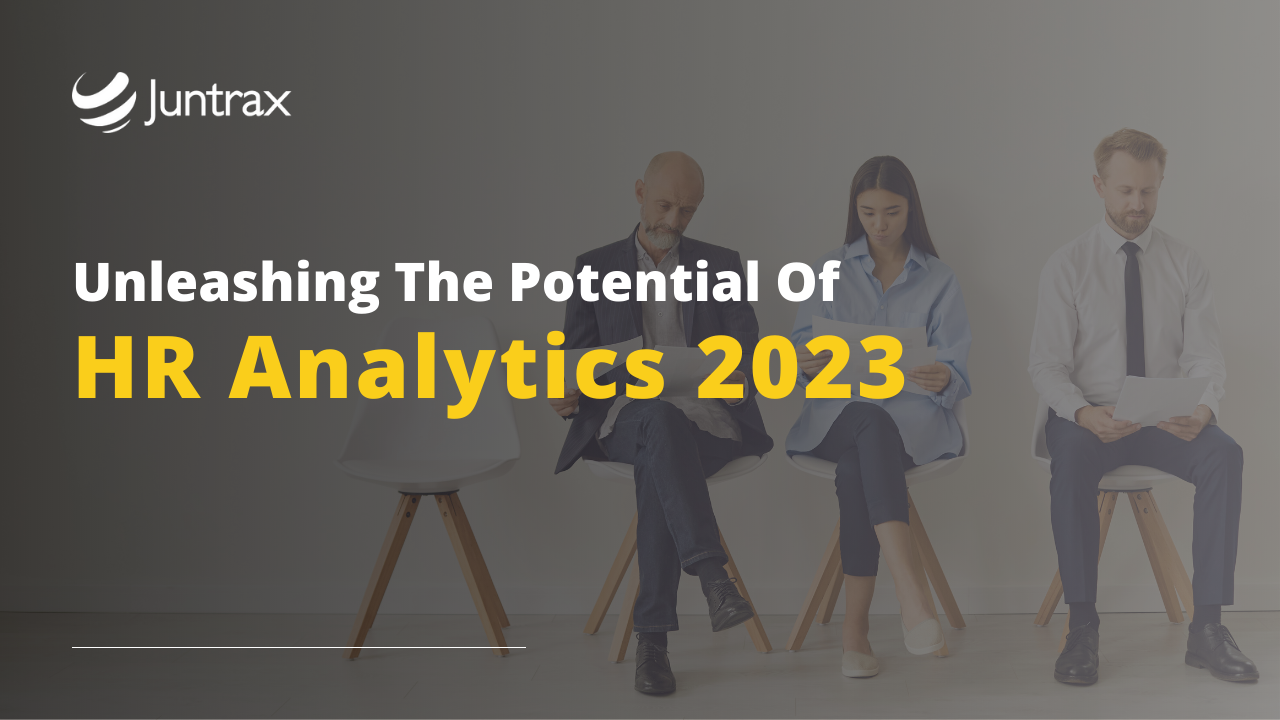Unleashing The Potential Of HR Analytics 2023

HR Analytics, which harnesses the power of data-driven insight, has become highly imperative for decision-making, employee engagement, talent management, productivity requirements, and performance management.
Because of this, McKinsey has claimed that artificial intelligence and other sophisticated analytics will enable $9.5 trillion to $15.4 trillion in yearly revenue. In the global platform, thereby, business goals are increasingly including HR analytics.
Although HR (or people) analytics have been discussed and written about extensively, most people still find them to be vague. This blog will explore the possibilities of people analytics, and walk you through all the procedures required to properly introduce and implement HR analytics. Lastly, given the importance of people analytics to HR, the blog will also narrate the required skills to be learned by HR data scientists. Executives, HR, and analytics experts are all part of the target audience.

What is HR Analytics?
HR analytics involves compiling, examining, and summarising HR data. It is also referred to as people analytics, talent analytics, or workforce analytics. Being a human resources management strategy, it helps your company to analyze data to determine the effect of a variety of HR KPIs on overall business performance.
Analytics in HR is a relatively new tool. This indicates that it has not been extensively studied in scholarly literature. Heuvel & Bondarouk’s 2016 definition of scientific HR analytics is the most well-known– “the systematic identification and quantification of the people drivers of business outcomes.”
The Driving Forces Behind Analytical Approach
Every organization aims to solve a particular set of people’s challenges. People analytics entails turning these issues into a clearly stated set of goals and/or measurements that can then be linked to what the organization already knows and would want to know about its personnel. Having said this, let’s explore the varied reasons that are alluring companies to approach HR Analytics.
Investment Analysis
HR and its connections to business outcomes are exceedingly challenging to measure. There is no immediate cause and effect in this situation.
On the other hand, CEOs want to see the results of their efforts to improve HR and talent. And in doing so, boards generally seek more human capital reporting in the following key metrics:
-
- Overall turnover rate
- Engagement/culture rates, and
- Diversity rate
According to PWC, additional significant disclosure patterns comprised:
-
- employee lifecycle
- employee demographics
- total incentives, and
- safety.
- Although HR analytics does not take the “traditional ROI form,” it still greatly aids by demonstrating the advantages to a business.
Cost Reduction
Change is more readily accepted, especially in businesses that are not as cost-effective as they should be.
In these situations, the CEO will typically approach the HR manager with an unpleasant task: increasing profitability or lowering the amount of personnel expense. When resolving this problem, a combination of analytical thinking and more conventional HR procedures is beneficial.
Competitive Edge
Workforce analytics is viewed as a cutting-edge strategy in contexts where empirical decisions produce superior results. This, then, enables the identification of top personnel and influences the environment in which they perform well.
According to Ferrar in his book The Power of People, “Workforce analytics is considered as one piece of an overall analytical mindset characterizing the organization.”
Beginning With HR Analytics: Five Simple Steps
People analytics have extensive potential to influence the functioning of HR, the approach towards employees, and the improvement of business outcomes. But to set sail?
There are seven steps to begin people analytics, according to David Green. We at Juntrax Solutions have come to a five-step conclusion.
✅ Firstly, question this- What issues are causing your CEO and board of directors the most sleepless nights?
Effective people analytics teams address business issues as opposed to HR problems. To answer this, consider risk, customer and employee retention, product quality, and sales productivity. This means that a key component of effective HR analytics is understanding the company.
✅ Secondly, question this– Which employees are most likely to advance and take on leadership roles?
Simple statistics can be used to provide an answer to this query. This makes it easier to quantify the connections between employee performance and organizational results.
✅ Thirdly, grow by learning. There is a wealth of information and instances accessible that can motivate you, deepen your understanding, and ultimately speed up your HR analytics journey. Try out various solutions before settling on one.
✅ Fourthly, start small and concentrate on a quick victory. Avoid being overly ambitious too soon. Getting an early win not only boosts the popularity of people analytics inside your organization but also raises your chances of eventually getting a greater budget.
✅ lastly, bid adieu to all hassles by overcoming the team’s aversion to receiving access to information other than HR data and demonstrating interest in finding solutions to real business challenges.
What qualities do successful HR data analysts require?
The head of people analytics, often known as the people-science team or workforce analytics department, is the chief advocate for data-driven decision-making and makes sure that its application consistently generates benefits for the company. The work is unquestionably multifaceted and calls for the wearing of several ‘hats’.
One must exhibit the following qualities to make business executives completely understand the significance and ramifications of outcomes:
-
- Great data science skills
- Active listener
- Consulting Capabilities
- Non-technical communicator
- Human Resource
- Work Psychology
- Story-telling
- Stakeholder management to support the analytics project by bringing everyone together
Plus, HR Analysts should also have a vision and a mission.
Conclusion
Strong HR analytics are in demand from senior executives for reasons other than just sales or profit.
In fact, the growth of HR analytics is sometimes motivated by the goal to build a better workplace where businesses are deserving of the loyalty, trust, and support of their employees.